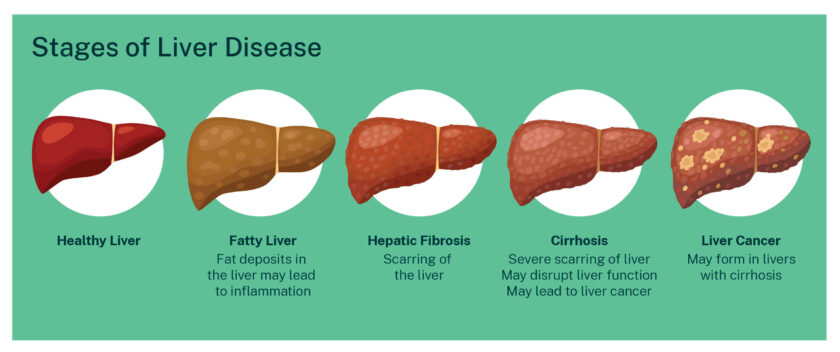- Main Page
- A1C Test
- Advance Directives
- Anxiety
- Aortic Aneurysm
- Aphrodisiacs
- Apple Cider Vinegar
- Arrhythmia
- Atrial Fibrillation - AFib
- Back Pain
- Blood Tests
- Blood Test Tubes
- Blood Types
- BMI Calculator
- Body Mass Index - BMI
- Bone Scan
- BPPV
- Bronchitis
- Cancer - Lung
- Carbohydrates
- Cardiac Catheterization
- Cardiovascular Disease
- Caregiver Glossary
- Caregiver Resources - LGBTQ+
- Caregiver Resources - MO
- Caregiver Resources - USA
- Continuous Glucose Monitors
- Cholesterol
- Citalopram
- COPD
- Coronary Artery Disease
- Cough
- CPAP
- CT scan
- Cyclobenzaprine
- Degenerative Disc Disease
- Depression
- Diabetes Information
- Diabetes - Type 1
- Diabetes - Type 2
- Diabetes - Type 3c
- Diabetes Facts
- Diabetes Care
- Diabetes Care Team
- Diabetes & Fruits
- Diabetes - Gestational
- Diabetes - Pre
- Diabetic Terms
- Diabetes & Vegetables
- Diet - Boiled Egg
- Diet - DASH
- Diet - Fat Burning
- Diet - Mediterranean
- Diet - Military
- Disability
- Disability Permits
- Do Not Resuscitate
- Dupixent®
- Echocardiogram
- Electrocardiogram
- Electromyography
- Emphysema
- Epidural - Lumbar
- Epidural - Transforaminal
- Epsom Salt
- Facet Arthropathy
- Farxiga®
- Flu - Influenza
- Fluoroscopy
- Gabapentin
- GERD
- Glycemic Index
- Gout
- Headaches
- Healing & Energy Work
- Health Facts
- Health Info. Lines
- Heart Attack
- Heart Disease - Other
- Heart Failure
- Heart Imaging Tests
- Herbal Terms
- Herbal Medicine
- Herb & Oils Uses
- Herniated disk
- HIPAA
- Home Remedies
- Humalog®
- Hydrogen Peroxide
- Hyperglycemia
- Hyperkalemia
- Hyperlipidemia
- Hypertension
- Hypoglycemia
- Hypokalemia
- Hypotension
- Important Numbers
- Indomethacin
- Informed Consent
- Inhalers
- Insomnia
- Insulin
- Juice Fasting
- Juice Recipes
- Kidney Cysts
- Kidney Disease
- Lantus®
- Lemon Benefits
- Lime Benefits
- Liver Disease
- Lumbar Retrolisthesis
- Medicaid
- Medical Specialties
- Medicare
- Medicare - Your Rights
- Melatonin
- Men's Health
- Mental Health
- MO HealthNet
- Mounjaro®
- MRI Scan
- Myelography
- Naproxen
- Nasal Polyps
- Nuclear Medicine
- Nutrition - Adults
- Nutrition - Adults, Older
- Nutrition - Kids
- Obesity
- Otolaryngologist
- Oxycodone-Acetaminophen
- Pain Management
- Peripheral Artery Disease
- Parking Spaces
- PET/CT Scan
- PET Scan
- Potassium
- Prescription Drugs
- Prurigo Nodularis
- PVC's
- Quetiapine
- Quit Smoking
- Radiculopathy
- Red Yeast Rice
- Reiki
- Salt & Sodium
- Salt Water Flush
- Sciatica
- Service Animals
- Sleep Apnea
- Sleep Disorders
- Sleep Studies
- SPECT Scan
- Spinal Stenosis
- Statins
- Stents
- Stress Test - Exercise
- Stress Test - Nuclear
- Sugars - Sweeteners
- Support Groups
- Tardive Dyskinesia
- Testosterone
- Trazodone
- Ultrasound
- Vaccines 19 and up
- Vaccines by Age
- Vaccines 0-6 yrs
- Vaccines 7-18 yrs
- Ventricular Fibrillation
- Vertigo
- Vital Records
- Vital Signs
- Vitamin B12
- Vitamin C
- Vitamin D
- Vitamin E
- Vitamin F
- Vitamin K
- Vitamins and Minerals
- Vitamins Recommended
- Water Benefits
- X-Rays
Needed to read PDF's
Liver Disease
Overview
There are many types of liver disease. Some of the most common types are treatable with diet and lifestyle changes, while others may require lifelong medication to manage. If you begin treatment early enough, you can often prevent permanent damage. But you may not have symptoms in the early stages. Late-stage liver disease is more complicated to treat.

What is liver disease?
Your liver is a large and powerful organ that performs hundreds of essential functions in your body. One of its most important functions is filtering toxins from your blood. While your liver is well-equipped for this job, its role as a filter makes it vulnerable to the toxins it processes. Too many toxins can overwhelm your liver’s resources and ability to function. This can happen temporarily or over a long period of time.
When healthcare providers refer to liver disease, they’re usually referring to chronic conditions that do progressive damage to your liver over time. Viral infections, toxic poisoning and certain metabolic conditions are among the common causes of chronic liver disease. Your liver has great regenerative powers, but constantly working overtime to restore itself takes its toll. Eventually, it can’t keep up.
What are the stages of chronic liver disease?
Chronic liver disease progresses in roughly four stages:
- Hepatitis.
- Fibrosis.
- Cirrhosis.
- Liver failure.
Stage 1: Hepatitis
Hepatitis means inflammation in your liver tissues. Inflammation is your liver’s response to injury or toxicity. It’s an attempt to purge infections and start the healing process. Acute hepatitis (an immediate and temporary response) often accomplishes this. But when the injury or toxicity continues, so does the inflammation. Chronic hepatitis causes hyperactive healing that eventually results in scarring (fibrosis).
Stage 2: Fibrosis
Fibrosis is a gradual stiffening of your liver as thin bands of scar tissue gradually add up. Scar tissue reduces blood flow through your liver, which reduces its access to oxygen and nutrients. This is how your liver’s vitality begins to gradually decline. Remarkably, some amount of fibrosis is reversible. Your liver cells can regenerate, and scarring can diminish if the damage slows down enough for it to recover.
Stage 3: Cirrhosis
Cirrhosis is severe, permanent scarring in your liver. This is the stage where fibrosis is no longer reversible. When your liver no longer has enough healthy cells left to work with, its tissues can no longer regenerate. But you can still slow or stop the damage at this stage. Cirrhosis will begin to affect your liver function, but your body will attempt to compensate for the loss, so you might not notice at first.
Stage 4: Liver failure
Liver failure begins when your liver can no longer function adequately for your body’s needs. This is also called “decompensated cirrhosis” — your body can no longer compensate for the losses. As liver functions begin to break down, you’ll begin to feel the effects throughout your body. Chronic liver failure is a gradual process, but it is eventually fatal without a liver transplant. You need a liver to live.
How common is liver disease?
Approximately 1.8% of U.S. adults (4.5 million adults) have liver disease. It causes about 57,000 U.S. deaths a year. Globally, it causes about 2 million deaths per year, or 4% of all deaths. Deaths are mostly from complications of cirrhosis, with acute liver failure accounting for a small portion. Liver disease affects males twice as often as females.
What are the first signs and symptoms of liver disease?
Chronic liver disease often won’t cause symptoms in the early stages. But sometimes it begins with an episode of acute hepatitis. For example, if you get a viral hepatitis infection, there’s an acute phase before the chronic phase sets in. You might have a fever, stomachache or nausea for a brief period while your immune system works to defeat the infection. If it doesn’t defeat it, it becomes a chronic infection.
Some other causes of liver disease might also begin with more acute symptoms or have occasional episodes of acute symptoms. Early symptoms of liver disease tend to be vague. They might include:
- Upper abdominal pain.
- Nausea or loss of appetite.
- Fatigue and malaise (feeling generally tired and ill).
What are the signs and symptoms of later-stage liver disease?
You might begin to notice more symptoms when your liver function begins to decline. This happens in the later stages of liver disease. One of the first side effects of declining liver function is that bile flow stalls in your biliary tract. Your liver no longer produces or delivers bile effectively to your small intestine. Instead, bile begins to leak into your bloodstream. This causes specific symptoms, including:
- Jaundice (yellow tint to the whites of your eyes and skin).
- Dark-colored pee (urine).
- Light-colored poop (stool).
- Digestive difficulties, especially with fats.
- Weight loss and muscle loss.
- Musty-smelling breath.
- Mild brain impairment (hepatic encephalopathy).
- Pruritus (itchy skin, but with no visible rash).
As liver disease advances, it can affect your blood flow, hormones and nutritional status. This can show up in various ways. You may see signs and symptoms in your skin and nails, such as:
- Spoon nails.
- Terry’s nails.
- Nail clubbing.
- Spider angiomas.
- Tiny red dots on your skin (petechiae).
- Small yellow bumps of fat deposits on your skin or eyelids.
- Easy bleeding and bruising.
- Red palms of your hands.
You may see signs of fluids leaking from your blood vessels and accumulating in your body, such as:
- Swollen abdomen (ascites).
- Swollen ankles, feet, hands and face (edema).
Liver disease symptoms in women may include:
- Irregular periods (menstruation).
- Female infertility.
Liver disease symptoms in men may include:
- Shrunken testicles.
- Enlarged male breast tissue.
What are the complications of end-stage liver disease?
End-stage liver disease refers to decompensated cirrhosis and liver failure, when your liver has lost the ability to regenerate and is slowly declining. The most significant side effects of end-stage liver disease are portal hypertension and primary liver cancer (hepatocellular carcinoma). Complications of these two conditions are the leading causes of hospitalization and death in people with cirrhosis and liver failure.
Portal hypertension
Portal hypertension happens when scarring in your liver compresses the portal vein that runs through it. High blood pressure in the portal vein causes your body to divert blood flow to other veins connected with it, which become enlarged and stretched thin. These veins can leak, break and bleed. Internal bleeding from these varices can be sudden, severe and life-threatening.
Additional complications, though rare, include:
- Enlarged and overactive spleen (hypersplenism).
- Respiratory failure (hepatopulmonary syndrome).
- Kidney failure (hepatorenal syndrome).
Liver Cancer
While not everyone with chronic liver disease gets primary liver cancer (hepatocellular carcinoma), most people who do get liver cancer have chronic liver disease. The cycle of inflammation, repair and scarring changes your liver cells in ways that make them more likely to change into cancer. Healthcare providers also believe that chronic hepatitis viruses, in particular, may interfere with the DNA in your liver cells.
What are the causes of liver disease?
There are over 100 types of liver disease, but they fall into a handful of subtypes. Causes include:
- Viral infections. Viral hepatitis infections that become chronic can cause chronic hepatitis, including hepatitis B and hepatitis C.
- Alcohol-induced hepatitis. Heavy alcohol use can cause acute or chronic hepatitis. If it goes on long enough, it can cause cirrhosis and liver failure.
- Toxic hepatitis. Chronic overexposure to toxins, such as industrial chemicals or drugs, can cause acute or chronic hepatitis.
- Non-alcohol related fatty liver disease. Metabolic conditions associated with obesity, high blood sugar and high blood lipids can cause excess fat storage in your liver, which can cause inflammation (non-alcohol related steatohepatitis).
- Biliary stasis. Congenital (present at birth) conditions that obstruct or stall the flow of bile through your bile ducts can cause bile to build up and injure your liver, including biliary atresia and cystic fibrosis. Non-congenital causes include biliary stricture and gallstones.
- Autoimmune diseases. Autoimmune conditions can cause chronic inflammation and scarring in your liver or your bile ducts, including autoimmune hepatitis, primary biliary cholangitis and primary sclerosing cholangitis.
- Inherited metabolic disorders. Disorders that cause toxic products to build up in your blood — such as glycogen storage disease (GSD), Wilson disease, hemochromatosis and Gaucher disease — can cause chronic liver damage.
- Cardiovascular diseases. Conditions that affect blood flow to and from your liver — including Budd-Chiari syndrome, ischemia, arterial diseases and right-sided heart failure — can cause chronic liver damage.
What are the risk factors for acquiring liver disease?
You may be more likely to get liver disease if you:
- Drink alcohol heavily.
- Use intravenous drugs.
- Use pain relievers like aspirin or acetaminophen
- Have metabolic syndrome.
- Are regularly exposed to toxic chemicals.
- Are regularly exposed to other people’s blood or body fluids.
How do you test for liver disease?
A healthcare provider checking for liver disease will begin by physically examining you. They’ll look for visible signs and ask about your symptoms. They may also ask about your diet, lifestyle and health history. Finally, they’ll use lab tests and imaging scans to check for liver disease. These may include:
- Blood tests. A panel of liver function tests can show signs of liver disease, liver disease severity and liver failure. These measure liver products like liver enzymes, proteins and bilirubin levels in your blood. Blood tests may also indicate inflammation, specific diseases or side effects, like reduced blood clotting.
- Imaging tests. An abdominal ultrasound, CT scan (computed tomography scan) or MRI (magnetic resonance imaging) can show the size, shape and texture of your liver. This can reveal inflammation and swelling, growths and fibrosis.
- Elastography. A special type of imaging test called elastography uses ultrasound or MRI technology to measure the level of stiffness or fibrosis in your liver.
- Endoscopy. If your provider needs to see inside your biliary tract, they might need to use a type of endoscopic imaging. Endoscopy involves passing a tiny camera (endoscope) through your upper GI tract. From the endoscope, they can use EUS or ERCP to see your bile ducts.
- Nuclear medicine imaging. A nuclear liver and spleen scan uses a gamma camera to detect a (harmless) radioactive tracer material that’s injected into your body. How your liver absorbs the tracer will highlight the areas that aren’t functioning normally.
- Liver biopsy. A liver biopsy is a minor procedure to take a small tissue sample from your liver to test in a lab. A healthcare provider can usually take the sample through a hollow needle. You might need a liver biopsy to check for cancer or confirm cirrhosis and help determine the cause.
How do you treat liver disease?
Some types of liver diseases have specific medical treatments. For example, antivirals treat viral hepatitis, while corticosteroids and immunosuppressants treat autoimmune diseases. But in many cases, lifestyle changes are the primary treatment for liver disease. Reducing the toxic load on your liver is important with any type of liver disease, but essential for those caused by excess fat storage, alcohol or other toxins.
However, early recognition is key to treating liver disease effectively before permanent damage is done. Unfortunately, not everyone discovers liver disease in time to reverse its course. If you already have cirrhosis or liver failure, you might need additional treatments for complications like portal hypertension or liver cancer. Your liver might not be able to recover, and you might eventually need a liver transplant.
Can liver disease be reversed?
Liver disease can be reversed in the early stages if you and your healthcare team are able to remove or manage the cause effectively. This depends on the cause and how treatable it is. Once you have cirrhosis, you can’t undo the scarring that’s already been done, but you may be able to prevent further damage or slow it down. Chronic liver failure isn’t reversible, though it can still take years to progress.
Is liver disease curable?
Many types of liver disease are curable. Toxic and alcohol-related liver disease can improve when you’re no longer exposed to the toxin. Diet and lifestyle changes can relieve non-alcohol related fatty liver disease. Other types of liver disease aren’t curable, but they’re often manageable with medications. Certain inherited diseases, autoimmune diseases and viral infections may need lifelong treatment.
How can I lower my risk of liver disease?
You can help prevent liver disease by:
- Getting vaccinated. Vaccines are available to prevent viral hepatitis A and B.
- Practicing good hygiene. Handwashing after using the bathroom, safe food handling and safe needle use can help prevent infections from spreading.
- Drinking alcohol in moderation and using medications as directed. If you have a substance use disorder (SUD), treatment can help prevent toxic hepatitis.
- Managing metabolic factors such as your blood lipids and blood sugar. A healthcare provider can help with this.
How should I take care of myself while living with liver disease?
If you have liver disease, you can help take care of your liver by:
- Maintaining a healthy diet. Emphasize whole foods, with plenty of plants and lean protein.
- Maintaining a healthy BMI (body mass index). Your healthcare provider can advise you.
- Avoiding alcohol, tobacco and nonprescription drug use. Ask your healthcare provider for resources to help you quit.
- Taking medications only as directed. Always discuss any new medications with your provider.
- Protecting yourself from infections. Practice good hygiene and safe sex to avoid additional burdens on your liver.
- Keeping up with your healthcare appointments. Get your regular screenings to catch complications early.
One Final Note..
Your liver plays such a large role in your overall health that when it’s sick, it affects you in all kinds of ways. But you won’t always feel the effects of liver disease until it’s already advanced. To protect your liver, it’s important to be aware of the kinds of things that can harm it and try to avoid those things. Keeping up with your regular healthcare checkups can also help catch liver disease sooner rather than later.
Find me on Social Media
 |
Don't forget to bookmark me to see updates.. Copyright © 2000 - 2025 - K. Kerr Most recent revision November 19, 2025 10:55:33 AM
|











